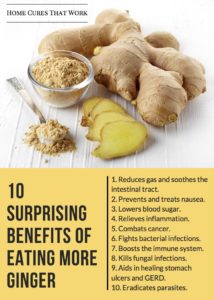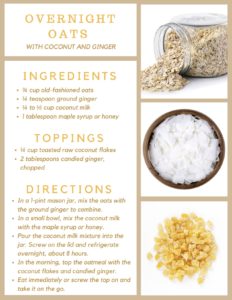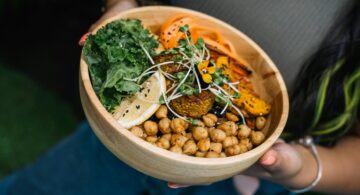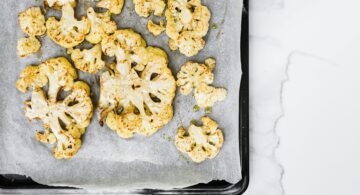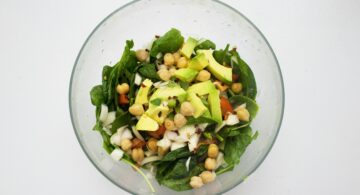10 Surprising Benefits of Eating More Ginger + 2 Healing Recipes
This Super Root Improves Your Health, Including Reducing Inflammation, Fighting Cancer, Easing Nausea and Lots More
Ginger may be the queen of spices when it comes to health benefits! The use of ginger for medicinal purposes reaches back well over 4,000 years. Ginger is a plant that is cultivated in warm climates throughout Southeastern Asia, Africa, Australia, around the Mediterranean and more recently in Mexico and South America.
Ginger (Zingiber officianale) belongs to the same plant family as turmeric and cardamom. The rhizome or bulbous root is the part of the plant that contains its most important component, Gingerol. Due to its lengthy history as a medicine, ginger may be one of the most studied spices or herbs.
For years in our medicine cabinet, my wife and I have kept ginger for relief of indigestion and upset stomach. But as you’ll see, ginger also possesses powerful properties for numerous other health conditions. In fact, James A. Duke, PhD, the world’s foremost authority on healing herbs, lists more than 40 health benefits of ginger in his book, The Green Pharmacy.[1]
In general, ginger with its gingerols boasts strong antioxidant, anti-inflammatory, anti-fungal, anti-bacterial, anti-viral, and anti-parasitic properties.[2], [3] Thus, ginger offers immune- and energy-building benefits. Additionally, ginger is a good source of vitamin C, magnesium, potassium, copper, and manganese.[4] I can’t think of another herb or spice with such a wide array of effective therapeutic applications! And unlike many other herbs and spices, you can enjoy ginger in a wide variety of forms.
10 of Ginger’s Most Well-Known Health Benefits
- Reduces gas and soothes the intestinal tract.[5] Ginger is a carminative and an intestinal spasmolytic, and these properties provide relief for intestinal distress. Perhaps you ate too much for dinner, or that late night snack didn’t settle well. Chew some candied ginger for almost immediate relief!
- Prevents and treats nausea.[6] For centuries, ginger has been used to prevent and stave off seasickness and other kinds of motion sickness. Studies have demonstrated that ginger may be more potent than Dramamine against such discomfort. Many women with morning sickness during pregnancy have also found safe relief through ginger. More recently, ginger is being used to curb nausea following surgeries and chemotherapy.
- Lowers blood sugar.[7] In 2015, a study involving 41 individuals with type 2 diabetes revealed that taking 2 grams of ginger powder per day lowered their fasting blood sugar by 12%. Ginger aids in the release and action of insulin and improves carbohydrate metabolism. Ginger also helps protect the body from complications due to diabetes.[8]
- Relieves inflammation.[9] Several studies have shown that ginger reduces inflammation and muscle soreness following exercise, during women’s menstrual cycles, with migraine headaches, and in people suffering with osteoarthritis and rheumatoid arthritis. And ginger does this without the harmful effects of non-steroidal inflammatory drugs (NSAIDs).
- Combats cancer.[10], [11] In clinical studies, ginger has been shown to be effective in killing cancer cells in patients with prostate, colorectal, ovarian, lung, breast, skin and pancreatic cancer. Ginger extracts possess antioxidant, anti-inflammatory and anti-tumor effects on cancer cells.[12]
- Fights bacterial infections.[13] A study published by the Journal of Microbiology and Antimicrobials in 2011 compared ginger’s effectiveness with conventional antibiotics against Staphylococcus and Streptococcus pyogenes. Ginger was actually more effective in fighting these hospital-borne bacterial infections.
- Boosts the immune system.[14] Drinking ginger tea (see recipe below) is a great preventative measure and treatment for common colds and flus. Dr. Duke explains that ginger’s effectiveness is due to its numerous (nearly a dozen) antiviral compounds.[15]
- Kills fungal infections.[16] Fungal infections are difficult to fight because they have become increasingly resistant to conventional drugs. But when Carleton University evaluated 29 herbs and their ability to kill fungal infections, ginger emerged as the winner. You can take ginger internally or apply it topically on affected areas.
- Aids in healing stomach ulcers and GERD.[17] In a study published in the journal, Molecular Nutrition and Food Research, scientists found ginger to be six-to-eight times more effective than Prevacid, a prominent drug used to treat GERD.
- Eradicates parasites.[18] Whether you’re a world traveler, a back-packer, or someone who likes sushi or cerviche, it’s very possible that you will have to contend with parasites or worms at some time in your life. The anisakis worm, for instance, is common in raw fish and is a dangerous invader. Because of its prevalence, the Japanese routinely eat pickled ginger along with their sushi to stave off these worms. One study showed that ginger extract was effective in arresting 90 percent of anisakis larvae within 4 hours and destroying them within 16 hours.
Ginger’s Various Forms
One of the great things about ginger is that you can use it in so many different ways effectively. And some of these ways are downright delicious!
- Raw – Cut a thumbnail slice of raw ginger and add it to your favorite smoothie or to make tea.
- Tea – Steep two ½-inch slices of fresh ginger in a cup of hot water to settle your stomach or aid in cold relief or for other applications. The ginger will even reduce inflammation! You may wish to add some honey or lemon for flavor.
- Essential Oil – This is by far the most potent form of ginger and like other essential oils you use very little of it. You can add a few drops to a glass of water or other beverage, inhale its vapors, or mix it with a carrier oil for topical applications for athlete’s foot, or a muscle-rub.
- Powdered – You can obtain powdered ginger for cooking and baking recipes or in capsule form to take as a supplement.
- Crystalized – This is also called candied ginger. This is a very tasty treat and a pleasant way to get the benefits from ginger! We keep a bag of these in our medicine chest to treat upset stomach or sometimes simply to enjoy as a healthy “candy.”
- Ginger Beer/Ale – This is generally a non-alcoholic beverage that has a strong, but pleasant flavor. Whenever I had the flu as a child, my mom would buy ginger ale for me to sip to ease a stomach ache. But you can appreciate ginger beer/ale simply as a refreshing beverage over ice on a hot day.
Ginger Recipes
An article on ginger would not be complete without a couple of recipes. Want to know what goes together like chocolate and peanut butter or apple and cinnamon? The earthy-sweet combo of coconut and ginger. Here the two join forces to create the creamiest bowl of richly spiced oatmeal sure to warm up your morning routine. Go ahead, try it for breakfast. [19]
Overnight Oats with Coconut and Ginger
Ingredients- ¾ cup old-fashioned oats
- ¼ teaspoon ground ginger
- ¼ to ½ cup coconut milk
- 1 tablespoon maple syrup or honey
TOPPINGS
- ¼ cup toasted raw coconut flakes
- 2 tablespoons candied ginger, chopped
Directions
- In a 1-pint mason jar, mix the oats with the ground ginger to combine.
- In a small bowl, mix the coconut milk (if you prefer a thicker oatmeal, use less milk) with the maple syrup or honey.
- Pour the coconut milk mixture into the jar. Screw on the lid and refrigerate overnight, about 8 hours.
- In the morning, top the oatmeal with the coconut flakes and candied ginger. Eat immediately or screw the top on and take it on the go.
Tahini Ginger Quinoa Bowl [20]
Ingredients
- 2 1/2 Tbsp tahini
- 1 Tbsp peeled and finely grated ginger
- 1 tsp pressed garlic
- 2 1/2 Tbsp raw honey
- 1 Tbsp water
- 3 Tbsp tamari
- 1/2 cup toasted sesame oil
- 1 cup quinoa
- 1 1/2 cups small cubed sweet potato
- 1 cup chopped kale
- 2 cups fine chopped purple cabbage
- 1 Tbsp olive oil
- 1 cup finely chopped onions
- 1 Tbsp chopped green onion
- Sesame seeds to garnish
- Turmeric powder to garnish
Directions
- Rinse and cook 1 cup of quinoa in two cups of water by bringing the quinoa and water to a boil then reducing heat and covering, allowing to simmer for 15 minutes.
- Peel sweet potato or yam. Cut into 1″ pieces either in small triangles or squares—just make sure they are the same size. Add potato into steamer and steam for 4 minutes.Then add purple cabbage and steam for another 4 minutes. Add kale at 8 minutes, stir well, and leave in for another 2 minutes. Remove from heat and mix with quinoa.
- On medium heat, warm olive oil in a medium sauté pan and add onions. Once onions are translucent (about 6 minutes), reduce heat and add tahini sauce. Heat for one minute then toss with quinoa and vegetables.
- Top with green onions, sesame seeds, and a pinch of turmeric to serve.
Ginger is one of the most versatile spices for use as a natural remedy and in recipes. We hope you enjoy these recipes and experience vibrant and amazing health as you add ginger to your medicine chest!
Work ginger into every meal. Get a healthy start to your day and enjoy ginger in homemade nut milks. Ginger can put a little zip into your lunchtime soup and salad combo. If your vegetables want to play along, make a ginger and broccoli bowl. Ginger in your drink doesn’t just mean ginger ale — it’s a gorgeous and nutritious addition to golden milk. Take standard ginger snaps up a notch with Gingerbread Snap Pumpkin Butter Cookies.
Let us know your favorite ways to use ginger in the comments!



